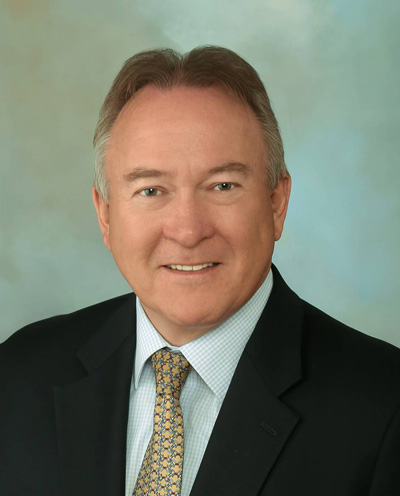Summit Therapeutics plc
(‘Summit’, the ‘Company’ or the ‘Group’)
Summit Therapeutics Reports Financial Results and Operational Progress for the First Quarter Ended 30 April 2019
Oxford, UK, and Cambridge, MA, US, 12 June 2019 – Summit Therapeutics plc (NASDAQ: SMMT, AIM: SUMM) today reports its financial results and provides an update on its operational progress for the first quarter ended 30 April 2019.
“As global leaders are sounding the alarm for new antibiotics, we are proud to be taking a leadership role in discovering and developing new classes of antibiotics with the potential to help combat the rising threat posed by antibiotic resistance,” said Mr Glyn Edwards, Chief Executive Officer of Summit. “We believe these new class antibiotics have the potential to transform patient lives and that it is possible to show clear advantages over standard of care treatments and cost effectiveness during development. With this differentiated approach, we believe we will have the opportunity to be commercially successful.
“Ridinilazole is the exemplar of this strategy. It is a precision, microbiome preserving antibiotic that aims to sustain cures of C. difficile infection to improve outcomes for patients. We were excited to initiate our landmark Ri-CoDIFy Phase 3 clinical programme in February 2019. If successful, we believe our two Phase 3 clinical trials of ridinilazole will deliver clinical and economic data to support ridinilazole as the new standard of care for patients with C. difficile infection.
“Our Discuva Platform is enabling us to expand our leadership role as innovators in infectious disease. In April
2019, we announced the addition to our pipeline of another new class antibiotic programme targeting Enterobacteriaceae infections. With this new discovery-stage programme, our preclinical programme for N. gonorrhoeae and ridinilazole for C. difficile, our pipeline now targets the three most urgent bacterial threats as defined by the US Centers for Disease Control and Prevention with new classes of antibiotics.”
Programme Highlights
Strategy
- Through its scientific focus, Summit is discovering new classes of antibiotics to treat serious infectious diseases. Through creative development programmes, Summit aims to show its new classes of antibiotics offer significant advantages over current standards of care. Through demonstrating economic advantages, Summit aims to provide compelling value for payors and healthcare systems and achieve commercial success.
Ridinilazole for C. difficile Infection (‘CDI’)
- RiCoDIFy Phase 3 clinical trial programme initiated in February 2019, which aims to support adoption of ridinilazole as the new standard of care treatment for C. difficile infection.
- These landmark design clinical trials aim to: i) show superiority over the current standard of care, vancomycin, using a composite endpoint measuring sustained clinical response; ii) generate health economic data to help support the commercial launch, if approved; and iii) undertake deep microbiome analysis that aims to show ridinilazole’s preservation of the gut microbiome.
- Recruitment of patients into the two Phase 3 clinical trials is ongoing, and the programme remains on-track for expected reporting of top-line data in H2 2021.
- Clinical and regulatory development of ridinilazole is supported by a BARDA contract worth up to $62 million.
SMT-571 for Gonorrhoea
- SMT-571 is a new class antibiotic that is designed to treat infections caused by Neisseria gonorrhoeae.
- In February 2019, preclinical data was published in the Journal of Antimicrobial Chemotherapy that showed SMT-571 had consistently high potency across over 200 clinically relevant strains of N. gonorrhoeae, including numerous multi-drug resistant and extensively-drug resistant strains.
- IND–enabling studies are ongoing and expected to continue through the second half of the year. The Phase 1 clinical trial is no longer expected to initiate in H2 2019. Summit is evaluating the design of a clinical trial programme with the potential to shorten the overall clinical development timeline of SMT-571, subject to regulatory approvals. Further updates on the design and timelines for the start of the clinical programme to be provided when available.
- SMT-571 development is being supported by an award of up to $4.5 million from CARB-X.
DDS-04 for Enterobacteriaceae
- Identification of DDS-04 compound series, a new class of antibiotics that acts via the novel bacterial target LolCDE with the potential to treat infections caused by the gram-negative bacteria, Enterobacteriaceae.
- In vivo proof of concept demonstrated with a DDS-04 series compound cured infection in a translationally-relevant animal model of urinary tract infection, while therapeutic concentrations were also achieved in the lungs and bloodstream showing potential to treat other major Enterobacteriaceae infection sites. These data were presented at the 20th European Congress of Clinical Microbiology & Infectious Diseases.
Financial Highlights
- Cash and cash equivalents at 30 April 2019 of £28.3 million compared to £26.9 million at 31 January 2019.
- Loss for the three months ended 30 April 2019 of £4.0 million compared to a loss of £5.8 million for the three months ended 30 April 2018.
This announcement contains inside information for the purposes of Article 7 of EU Regulation 596/2014 (MAR).
About Summit Therapeutics
Summit Therapeutics is a leader in antibiotic innovation. Our new mechanism antibiotics are designed to become the new standards of care for the benefit of patients and create value for payors and healthcare providers. We are currently developing new mechanism antibiotics to treat infections caused by C. difficile, N. gonorrhoeae and Enterobacteriaceae and are using our proprietary Discuva Platform to expand our pipeline. For more information, visit www.summitplc.com and follow us on Twitter @summitplc.
For more information:
| Summit Glyn Edwards / Richard Pye (UK office) Michelle Avery (US office) |
Tel: +44 (0)1235 443 951 |
| Cairn Financial Advisers LLP (Nominated Adviser) Liam Murray / Tony Rawlinson |
Tel: +44 (0)20 7213 0880 |
| N+1 Singer (Joint Broker) Aubrey Powell / Jen Boorer, Corporate Finance Tom Salvesen, Corporate Broking |
Tel: +44 (0)20 7496 3000 |
| Bryan Garnier & Co Limited (Joint Broker)
Phil Walker / Dominic Wilson |
Tel: +44 (0)20 7332 2500 |
| MSL Group (US) Jon Siegal |
Tel: +1 781 684 6557 summit@mslgroup.com |
| Consilium Strategic Communications (UK) Mary-Jane Elliott / Sue Stuart / Jessica Hodgson / Lindsey Neville |
Tel: +44 (0)20 3709 5700 summit@consilium-comms.com |
Forward Looking Statements
Any statements in this press release about the Company’s future expectations, plans and prospects, including but not limited to, statements about the potential benefits and future operation of the BARDA or CARB-X contract, including any potential future payments thereunder, the clinical and preclinical development of the Company’s product candidates, the therapeutic potential of the Company’s product candidates, the potential of the Discuva Platform, the potential commercialisation of the Company’s product candidates, the sufficiency of the Company’s cash resources, the timing of initiation, completion and availability of data from clinical trials, the potential submission of applications for marketing approvals and other statements containing the words “anticipate,” “believe,” “continue,” “could,” “estimate,” “expect,” “intend,” “may,” “plan,” “potential,” “predict,” “project,” “should,” “target,” “would,” and similar expressions, constitute forward-looking statements within the meaning of The Private Securities Litigation Reform Act of 1995. Actual results may differ materially from those indicated by such forward-looking statements as a result of various important factors, including: the ability of BARDA or CARB-X to terminate our contract for convenience at any time, the uncertainties inherent in the initiation of future clinical trials, availability and timing of data from ongoing and future clinical trials and the results of such trials, whether preliminary results from a clinical trial will be predictive of the final results of that trial or whether results of early clinical trials or preclinical studies will be indicative of the results of later clinical trials, expectations for regulatory approvals, laws and regulations affecting government contracts, availability of funding sufficient for the Company’s foreseeable and unforeseeable operating expenses and capital expenditure requirements and other factors discussed in the “Risk Factors” section of filings that the Company makes with the Securities and Exchange Commission, including the Company’s Annual Report on Form 20-F for the fiscal year ended 31 January 2019. Accordingly, readers should not place undue reliance on forward-looking statements or information. In addition, any forward-looking statements included in this press release represent the Company’s views only as of the date of this release and should not be relied upon as representing the Company’s views as of any subsequent date. The Company specifically disclaims any obligation to update any forward-looking statements included in this press release.
FINANCIAL REVIEW
Revenue
Revenue was £0.2 million for the three months ended 30 April 2019 compared to £3.9 million for the three months ended 30 April 2018. This decrease was principally due to the reduction in revenue related to the Sarepta licence and collaboration agreement following the Group’s decision to discontinue development of ezutromid in June 2018. Revenue recognised during the three months ended 30 April 2019 relating to the cost-share arrangement under the Sarepta agreement amounted to £0.1 million.
The Group also recognised £0.1 million of revenue during the three months ended 30 April 2019 relating to the receipt of a $2.5 million (£1.9 million) upfront payment in respect of the licence and commercialisation agreement signed with Eurofarma Laboratórios SA (‘Eurofarma’) in December 2017.
Other Operating Income
Other operating income was £4.9 million for the three months ended 30 April 2019, as compared to £3.5 million for the three months ended 30 April 2018. This increase resulted primarily from the recognition of operating income from Summit’s funding contract with BARDA for the development of ridinilazole, which was £4.6 million for the three months ended 30 April 2019 as compared to £3.3 million for the three months ended 30 April 2018.
The Group also recognised operating income of £0.2 million during the three months ended 30 April 2019 related to the Group’s CARB-X award supporting the development of SMT-571 for the treatment of gonorrhoea.
Operating Expenses
Research and Development Expenses
Research and development expenses decreased by £3.3 million to £8.3 million for the three months ended 30 April 2019 from £11.6 million for the three months ended 30 April 2018.
Expenses related to the CDI programme increased by £0.8 million to £5.8 million for the three months ended 30 April 2019 from £5.0 million for the three months ended 30 April 2018. This increase primarily related to clinical and manufacturing activities related to the Ri-CoDIFy Phase 3 clinical trials of ridinilazole that commenced in February 2019.
Investment in the Group’s antibiotic pipeline development activities was £0.7 million for the three months ended 30 April 2019 compared to £0.2 million for the three months ended 30 April 2018. This increase primarily related to preclinical development activities for SMT-571 for the treatment of gonorrhoea and the DDS-04 series for the treatment of Enterobacteriaceae infections.
Expenses related to the Duchenne muscular dystrophy (‘DMD’) programme decreased by £4.1 million to £0.1 million for the three months ended 30 April 2019 from £4.2 million for the three months ended 30 April 2018, as a result of the discontinuation of the development of ezutromid in June 2018. The Group does not expect to incur further significant cost for this programme.
Other research and development expenses decreased by £0.5 million to £1.7 million during the three months ended 30 April 2019 as compared to £2.2 million during the three months ended 30 April 2018, which was driven by a decrease in staffing and facilities costs reflecting implementation of cost-cutting measures following the decision to discontinue development of ezutromid in June 2018.
General and Administration Expenses
General and administration expenses decreased by £0.6 million to £1.7 million for the three months ended 30 April 2019 from £2.3 million for the three months ended 30 April 2018. This decrease was driven by a reduction in staff related costs and legal and professional fees, offset by a net negative movement in exchange rate variances.
Finance Costs
Finance costs recognised during the three months ended 30 April 2019 relate to lease liability interest payable and the unwinding of the discount associated with provisions. Finance costs were £0.1 million for the three months ended 30 April 2019 compared to £0.2 million for the three months ended 30 April 2018. This decrease relates to the cessation of the unwinding of the discount following the remeasurement of the financial liabilities on funding arrangements relating to DMD-related US not for profit organisations to £nil in June 2018.
Taxation
The income tax credit for the three months ended 30 April 2019 was £0.8 million as compared to £0.9 million for the three months ended 30 April 2018. This net decrease was driven by a decrease in the Group’s accrued UK research and development tax credit, reflecting lower research and development expenditure, offset by a net positive movement in taxes relating to the US operations and the release of deferred tax liabilities associated with the amortisation of intangible assets.
Losses
Loss before income tax was £4.9 million for the three months ended 30 April 2019 compared to a loss before income tax of £6.8 million for the three months ended 30 April 2018. Net loss for the three months ended 30 April 2019 was £4.0 million with a basic loss per share of 3 pence compared to a net loss of £5.8 million for the three months ended 30 April 2018 with a basic loss per share of 8 pence.
Cash Flows
The Group had a net cash inflow of £1.3 million for the three months ended 30 April 2019 as compared to £7.2 million for the three months ended 30 April 2018.
Operating Activities
For the three months ended 30 April 2019, net cash generated from operating activities was £1.4 million compared to net cash used in operating activities of £7.0 million for the three months ended 30 April 2018. This net positive movement of £8.4 million was driven by an increase in cash received from licensing agreements and funding arrangements of £3.8 million and an increase in taxation cash inflows of £4.9 million due to the timing of receipt of the Group’s research and development tax credits receivable on qualifying expenditure in respect of financial years ended 31 January 2017 and 2018, offset by an increase in operating costs of £0.3 million.
Investing Activities
Net cash used in investing activities for the three months ended 30 April 2019 and 30 April 2018 represents amounts paid to acquire property, plant and equipment and intangible assets, net of bank interest received on cash deposits.
Financing Activities
Net cash used in financing activities for the three months ended 30 April 2019 of £0.1 million primarily relates to lease liability repayments of £0.1 million. Net cash generated from financing activities for the three months ended 30 April 2018 of £14.2 million included £14.1 million of proceeds, net of transaction costs, received following the Group’s equity placing on the AIM market of the London Stock Exchange in March 2018 and £0.1 million received following the exercise of restricted stock units and share options, offset by lease liability repayments of £0.1 million.
Financial Position and Cash Runway Guidance
As at 30 April 2019, total cash and cash equivalents held were £28.3 million (31 January 2018: £26.9 million).
The Group believes that its existing cash and cash equivalents, anticipated payments from BARDA under its contract for the development of ridinilazole and anticipated payments from CARB-X under its contract for the development of its gonorrhoea antibiotic candidate, will be sufficient to enable the Group to fund its operating expenses and capital expenditure requirements through 31 January 2020.
| Glyn Edwards | ||
| Chief Executive Officer | ||
| 12 June 2019 |
FINANCIAL STATEMENTS
Condensed Consolidated Statement of Comprehensive Income (unaudited)
For the three months ended 30 April 2019
| Three months ended 30 April 2019 |
Three months ended 30 April 2019 |
Three months ended 30 April 2018 |
|||||
| (Adjusted*) | |||||||
| Note | $000s | £000s | £000s | ||||
| Revenue | 324 | 249 | 3,874 | ||||
| Other operating income | 6,347 | 4,871 | 3,455 | ||||
| Operating expenses | |||||||
| Research and development | (10,780 | ) | (8,273 | ) | (11,590 | ) | |
| General and administration | (2,156 | ) | (1,655 | ) | (2,328 | ) | |
| Total operating expenses | (12,936 | ) | (9,928 | ) | (13,918 | ) | |
| Operating loss | (6,265 | ) | (4,808 | ) | (6,589 | ) | |
| Finance income | 3 | 2 | 1 | ||||
| Finance costs | (79 | ) | (61 | ) | (200 | ) | |
| Loss before income tax | (6,341 | ) | (4,867 | ) | (6,788 | ) | |
| Income tax | 1,097 | 842 | 946 | ||||
| Loss for the period | (5,244 | ) | (4,025 | ) | (5,842 | ) | |
| Other comprehensive income | |||||||
| Items that may be reclassified subsequently to profit or loss | |||||||
| Exchange differences on translating foreign operations | 4 | 3 | 7 | ||||
| Total comprehensive loss for the period | (5,240 | ) | (4,022 | ) | (5,835 | ) | |
| Basic and diluted loss per ordinary share from operations | 2 | (4) cents | (3) pence | (8) pence | |||
* See Note 1 – ‘Basis of Accounting – Adoption of IFRS 16 ‘Leases’’
Condensed Consolidated Statement of Financial Position (unaudited)
As at 30 April 2019
| 30 April 2019 | 30 April 2019 | 31 January 2019 | |||||
| (Adjusted*) | |||||||
| $000s | £000s | £000s | |||||
| ASSETS | |||||||
| Non-current assets | |||||||
| Goodwill | 2,364 | 1,814 | 1,814 | ||||
| Intangible assets | 13,547 | 10,397 | 10,604 | ||||
| Property, plant and equipment | 1,812 | 1,391 | 1,540 | ||||
| 17,723 | 13,602 | 13,958 | |||||
| Current assets | |||||||
| Trade and other receivables | 12,324 | 9,458 | 13,491 | ||||
| Current tax receivable | 2,967 | 2,277 | 6,328 | ||||
| Cash and cash equivalents | 36,894 | 28,315 | 26,858 | ||||
| 52,185 | 40,050 | 46,677 | |||||
| Total assets | 69,908 | 53,652 | 60,635 | ||||
| LIABILITIES | |||||||
| Non-current liabilities | |||||||
| Lease liabilities | (739 | ) | (567 | ) | (647 | ) | |
| Deferred revenue | (920 | ) | (706 | ) | (831 | ) | |
| Provisions for other liabilities and charges | (2,480 | ) | (1,903 | ) | (1,851 | ) | |
| Deferred tax liability | (2,141 | ) | (1,643 | ) | (1,675 | ) | |
| (6,280 | ) | (4,819 | ) | (5,004 | ) | ||
| Current liabilities | |||||||
| Trade and other payables | (8,804 | ) | (6,757 | ) | (8,733 | ) | |
| Lease liabilities | (466 | ) | (358 | ) | (358 | ) | |
| Deferred revenue | (3,186 | ) | (2,445 | ) | (3,374 | ) | |
| Contingent consideration | (819 | ) | (629 | ) | (629 | ) | |
| (13,275 | ) | (10,189 | ) | (13,094 | ) | ||
| Total liabilities | (19,555 | ) | (15,008 | ) | (18,098 | ) | |
| Net assets | 50,353 | 38,644 | 42,537 | ||||
| EQUITY | |||||||
| Share capital | 2,091 | 1,605 | 1,604 | ||||
| Share premium account | 120,926 | 92,806 | 92,806 | ||||
| Share-based payment reserve | 1,316 | 1,010 | 1,148 | ||||
| Merger reserve | 3,944 | 3,027 | 3,027 | ||||
| Special reserve | 26,051 | 19,993 | 19,993 | ||||
| Currency translation reserve | 77 | 59 | 56 | ||||
| Accumulated losses reserve | (104,052 | ) | (79,856 | ) | (76,097 | ) | |
| Total equity | 50,353 | 38,644 | 42,537 | ||||
* See Note 1 – ‘Basis of Accounting – Adoption of IFRS 16 ‘Leases’’
Condensed Consolidated Statement of Cash flows (unaudited)
For the three months ended 30 April 2019
| Three months ended 30 April 2019 |
Three months ended 30 April 2019 |
Three months ended 30 April 2018 |
||||
| (Adjusted*) | ||||||
| $000s | £000s | £000s | ||||
| Cash flows from operating activities | ||||||
| Loss before income tax | (6,341 | ) | (4,867 | ) | (6,788 | ) |
| (6,341 | ) | (4,867 | ) | (6,788 | ) | |
| Adjusted for: | ||||||
| Finance income | (3 | ) | (2 | ) | (1 | ) |
| Finance costs | 79 | 61 | 200 | |||
| Foreign exchange gain | (201 | ) | (154 | ) | (457 | ) |
| Depreciation | 186 | 143 | 160 | |||
| Amortisation of intangible fixed assets | 270 | 207 | 208 | |||
| Loss on disposal of assets | 13 | 10 | — | |||
| Research and development expenditure credit | — | — | (65 | ) | ||
| Share-based payment | 167 | 128 | 545 | |||
| Adjusted loss from operations before changes in working capital | (5,830 | ) | (4,474 | ) | (6,198 | ) |
| Decrease / (increase) in prepayments and other receivables | 5,272 | 4,047 | (1,426 | ) | ||
| Decrease in deferred revenue | (1,373 | ) | (1,054 | ) | (2,339 | ) |
| (Decrease) / increase in trade and other payables | (2,633 | ) | (2,021 | ) | 3,007 | |
| Cash used in operations | (4,564 | ) | (3,502 | ) | (6,956 | ) |
| Taxation received | 6,381 | 4,897 | — | |||
| Net cash generated from operating activities | 1,817 | 1,395 | (6,956 | ) | ||
| Investing activities | ||||||
| Purchase of property, plant and equipment | (5 | ) | (4 | ) | (25 | ) |
| Purchase of intangible assets | — | — | (5 | ) | ||
| Interest received | 3 | 2 | 1 | |||
| Net cash used in investing activities | (2 | ) | (2 | ) | (29 | ) |
| Financing activities | ||||||
| Proceeds from issue of share capital | — | — | 15,000 | |||
| Transaction costs on share capital issued | — | — | (858 | ) | ||
| Proceeds from exercise of share options | 1 | 1 | 99 | |||
| Repayment of lease liabilities | (116 | ) | (89 | ) | (84 | ) |
| Net cash used in financing activities | (115 | ) | (88 | ) | 14,157 | |
| Increase in cash and cash equivalents | 1,700 | 1,305 | 7,172 | |||
| Effect of exchange rates in cash and cash equivalents | 198 | 152 | 411 | |||
| Cash and cash equivalents at beginning of the period | 34,996 | 26,858 | 20,102 | |||
| Cash and cash equivalents at end of the period | 36,894 | 28,315 | 27,685 | |||
* See Note 1 – ‘Basis of Accounting – Adoption of IFRS 16 ‘Leases’’
Condensed Consolidated Statement of Changes in Equity (unaudited)
Three months ended 30 April 2019
| Group | Share capital £000s |
Share premium account £000s |
Share-based payment reserve £000s |
Merger reserve £000s |
Special reserve £000s |
Currency translation reserve £000s |
Accumulated losses reserve £000s |
Total £000s |
|||||||||
| At 31 January 2019 (as previously reported) | 1,604 | 92,806 | 1,148 | 3,027 | 19,993 | 56 | (76,092 | ) | 42,542 | ||||||||
| Change in accounting policy (full retrospective application IFRS 16) | — | — | — | — | — | — | (5 | ) | (5 | ) | |||||||
| At 31 January 2019 (Adjusted*) | 1,604 | 92,806 | 1,148 | 3,027 | 19,993 | 56 | (76,097 | ) | 42,537 | ||||||||
| Loss for the period | — | — | — | — | — | — | (4,025 | ) | (4,025 | ) | |||||||
| Currency translation adjustment | — | — | — | — | — | 3 | — | 3 | |||||||||
| Total comprehensive loss for the period | — | — | — | — | — | 3 | (4,025 | ) | (4,022 | ) | |||||||
| Share options exercised | 1 | — | — | — | — | — | — | 1 | |||||||||
| Share-based payment | — | — | 128 | — | — | — | — | 128 | |||||||||
| Transfer | — | — | (266 | ) | — | — | — | 266 | — | ||||||||
| At 30 April 2019 | 1,605 | 92,806 | 1,010 | 3,027 | 19,993 | 59 | (79,856 | ) | 38,644 | ||||||||
Year ended 31 January 2019
| Group | Share capital £000s |
Share premium account £000s |
Share-based payment reserve £000s |
Merger reserve £000s |
Special reserve £000s |
Currency translation reserve £000s |
Accumulated losses reserve £000s |
Total £000s |
||||||||
| At 31 January 2018 (as previously reported) | 736 | 60,237 | 6,743 | 3,027 | 19,993 | 37 | (93,957 | ) | (3,184 | ) | ||||||
| Change in accounting policy (full retrospective application IFRS 16) | — | — | — | — | — | — | 32 | 32 | ||||||||
| At 31 January 2018 (Adjusted*) | 736 | 60,237 | 6,743 | 3,027 | 19,993 | 37 | (93,925 | ) | (3,152 | ) | ||||||
| Profit for the year (Adjusted*) | — | — | — | — | — | — | 7,490 | 7,490 | ||||||||
| Currency translation adjustment | — | — | — | — | — | 19 | — | 19 | ||||||||
| Total comprehensive profit for the period (Adjusted*) | — | — | — | — | — | 19 | 7,490 | 7,509 | ||||||||
| New share capital issued | 864 | 33,784 | — | — | — | — | — | 34,648 | ||||||||
| Transaction costs on share capital issued | — | (1,313 | ) | — | — | — | — | — | (1,313 | ) | ||||||
| Share options exercised | 4 | 98 | — | — | — | — | — | 102 | ||||||||
| Share-based payment | — | — | 4,743 | — | — | — | — | 4,743 | ||||||||
| Transfer | — | — | (10,338 | ) | — | — | — | 10,338 | — | |||||||
| At 31 January 2019 (Adjusted*) | 1,604 | 92,806 | 1,148 | 3,027 | 19,993 | 56 | (76,097 | ) | 42,537 | |||||||
Three months ended 30 April 2018
| Group | Share capital £000s |
Share premium account £000s |
Share-based payment reserve £000s |
Merger reserve £000s |
Special reserve £000s |
Currency translation reserve £000s |
Accumulated losses reserve £000s |
Total £000s |
||||||||
| At 31 January 2018 (as previously reported) | 736 | 60,237 | 6,743 | 3,027 | 19,993 | 37 | (93,957 | ) | (3,184 | ) | ||||||
| Change in accounting policy (full retrospective application IFRS 16) | — | — | — | — | — | — | 32 | 32 | ||||||||
| At 31 January 2018 (Adjusted*) | 736 | 60,237 | 6,743 | 3,027 | 19,993 | 37 | (93,925 | ) | (3,152 | ) | ||||||
| Loss for the period (Adjusted*) | — | — | — | — | — | — | (5,842 | ) | (5,842 | ) | ||||||
| Currency translation adjustment | — | — | — | — | — | 7 | — | 7 | ||||||||
| Total comprehensive loss for the period (Adjusted*) | — | — | — | — | — | 7 | (5,842 | ) | (5,835 | ) | ||||||
| New share capital issued | 83 | 14,917 | — | — | — | — | — | 15,000 | ||||||||
| Transaction costs on share capital issued | — | (858 | ) | — | — | — | — | — | (858 | ) | ||||||
| Share options exercised | 1 | 98 | — | — | — | — | — | 99 | ||||||||
| Share-based payment | — | — | 545 | — | — | — | — | 545 | ||||||||
| At 30 April 2018 (Adjusted*) | 820 | 74,394 | 7,288 | 3,027 | 19,993 | 44 | (99,767 | ) | 5,799 | |||||||
* See Note 1 – ‘Basis of Accounting – Adoption of IFRS 16 ‘Leases’’
The accompanying notes form an integral part of these condensed consolidated interim financial statements.
NOTES TO THE FINANCIAL INFORMATION
For the three months ended 30 April 2019
1. Basis of Accounting
The unaudited condensed consolidated interim financial statements of Summit Therapeutics plc (‘Summit’) and its subsidiaries (together, the ‘Group’) for the three months ended 30 April 2019 have been prepared in accordance with International Financial Reporting Standards (‘IFRS’) and International Financial Reporting Interpretations Committee (‘IFRIC’) interpretations as issued by the International Accounting Standards Board and with those parts of the Companies Act 2006 applicable to companies reporting under IFRS including those applicable to accounting periods ending 31 January 2020 and the accounting policies set out in Summit’s consolidated financial statements. There have been no changes to the accounting policies as contained in the annual consolidated financial statements as of and for the year ended 31 January 2019 other than as described below. These condensed consolidated interim financial statements do not include all information required for full statutory accounts within the meaning of section 434 of Companies Act 2006 and should be read in conjunction with the consolidated financial statements of the Group as at 31 January 2019 (the ‘2019 Accounts’). The 2019 Accounts, on which the Company’s auditors delivered an unqualified audit report, are available on the Group’s website at www.summitplc.com and will be delivered to the Registrar of Companies following the 2019 Annual General Meeting. The auditor’s report did not contain any statement under section 498 of the Companies Act 2006 but did contain a statement from the auditors drawing the shareholders’ attention to the Group’s need to raise additional capital as noted below.
Whilst the financial information included in this announcement has been prepared in accordance with IFRS and IFRIC interpretations as issued by the International Accounting Standards Board and with those parts of the Companies Act 2006 applicable to companies reporting under IFRS, this announcement does not itself contain sufficient information to comply with IFRSs.
The interim financial statements have been prepared assuming the Group will continue on a going concern basis. Based on management’s forecasts, the Group’s existing cash and cash equivalents, anticipated payments from BARDA under its contract for the development of ridinilazole and anticipated payments from CARB-X under its contract for the development of its gonorrhoea antibiotic candidate are expected to be sufficient to enable the Group to fund its operating expenses and capital expenditure requirements through 31 January 2020. The Group will need to raise additional funding in order to support, beyond this date, its planned research and development efforts, potential commercialisation related activities, if any of its product candidates receive marketing approval, as well as to support activities associated with operating as a public company in the United States and the United Kingdom. Should the Group be unable to raise additional funding, management has the ability to take mitigating action to fund its operating expenses and capital expenditure requirements in relation to its clinical development activities for only a short period beyond 12 months from the date of issuance of these financial statements. These circumstances represent a material uncertainty which may cast and raise significant doubt on the Group’s ability to continue as a going concern. The interim financial statements do not contain any adjustments that might result if the Group was unable to continue as a going concern.
The Group is evaluating various options to finance its cash needs through a combination of some, or all, of the following: equity offerings, collaborations, strategic alliances, grants and clinical trial support from government entities, philanthropic, non-government and not-for-profit organisations and patient advocacy groups, debt financings, and marketing, distribution or licensing arrangements. Whilst the Group believes that funds would be available in this manner before the end of January 2020, there can be no assurance that the Group will be able to generate funds, on terms acceptable to the Group, on a timely basis or at all, which would impact the Group’s ability to continue as a going concern. The failure of the Group to obtain sufficient funds on acceptable terms when needed could have a material adverse effect on the Group’s business, results of operations and financial condition.
The financial information for the three month periods ended 30 April 2019 and 2018 are unaudited.
Solely for the convenience of the reader, unless otherwise indicated, all pound sterling amounts stated in the Consolidated Statement of Financial Position as at 30 April 2019 and the Consolidated Statement of Comprehensive Income and Consolidated Statement of Cash Flows for the three months ended 30 April 2019 have been translated into US dollars at the rate on 30 April 2019 of $1.303 to £1.00. These translations should not be considered representations that any such amounts have been, could have been or could be converted into US dollars at that or any other exchange rate as at that or any other date.
The Board of Directors of the Company approved this statement on 12 June 2019.
Adoption of IFRS 16 ‘Leases’
IFRS 16 specifies how to recognise, measure, present and disclose leases. The standard provides a single lessee accounting model, requiring lessees to recognise assets and liabilities for all leases unless the lease term is 12 months or less or the underlying asset has a low value. The standard is effective for reporting periods beginning on or after 1 January 2019 and replaces the accounting standard IAS 17 ‘Leases’. Two adoption methods are permitted for transition: retrospectively to all prior reporting periods presented in accordance with IAS 8 ‘Accounting Policies, Changes in Accounting Estimates and Errors’, with certain practical expedients permitted; or retrospectively with the cumulative effect of initially applying the standard recognised at the date of initial application.
Accounting policy
At inception of a contract, the Group assesses whether a contract is, or contains, a lease based on whether the contract conveys the right to control the use of an identified asset for a period of time in exchange for consideration. The Group recognises a right-of-use asset within property, plant and equipment and a lease liability at the lease commencement date. The right-of-use asset is initially measured based on the initial amount of the lease liability adjusted for any lease payments made at or before the commencement date, plus any initial direct costs incurred and an estimate of costs to dismantle and remove the underlying asset or to restore the underlying asset or the site on which it is located, less any lease incentives received. The assets are depreciated to the earlier of the end of the useful life of the right-of-use asset or the lease term using the straight-line method. The lease term includes periods covered by an option to extend if the Group is reasonably certain to exercise that option and periods covered by an option to terminate if it is reasonably certain not to exercise that option. The lease liability is initially measured at the present value of the lease payments that are not paid at the commencement date, discounted using the interest rate implicit in the lease or, if that rate cannot be readily determined, the Group’s incremental borrowing rate. The lease liability is subsequently measured at amortised cost using the effective interest method and is remeasured when there is a change in future contractual lease payments or if the Group changes its assessment of whether it will exercise a purchase, extension or termination option.
The Group adopted this new standard effective 1 February 2019, as required, using the full retrospective transition method in accordance with IAS 8 ‘Accounting Policies, Changes in Accounting Estimates and Errors’. Under this method, the Group will adjust its results for the years ended 31 January 2018, and 2019, and applicable interim periods, as if IFRS 16 had been effective for those periods. The Group has assessed the effect of adoption of this standard as it relates to its UK leased properties in Oxford and Cambridge and has concluded that any other contracts are not within the scope of IFRS 16 or are of low value, for which the Group has elected not to apply the requirement of IFRS 16.
Due to the adoption of IFRS 16, the Group has recognised both right-of-use assets and lease liabilities related to its UK leased properties. The Group no longer recognises a lease incentive accrual and has reclassified some costs from research and development expenses and general and administration expenses to finance costs, being the interest expense on lease liabilities. In addition, some amounts previously presented as cash outflows from operating activities in the Group’s Consolidated Statement of Cash Flows are now presented as cash flows from investing or financing activities.
This change in accounting policy has been reflected retrospectively in the comparative Statement of Financial Position for the year ended 31 January 2019, the comparative Statement of Comprehensive Income, Statement of Cash Flows and Statement of Changes in Equity for the three months ended 30 April 2018, including the opening accumulated losses reserve at 1 February 2018 and 1 February 2019.
During the year ended 31 January 2019, the Group re-assessed the allocation of staff related expenses, totalling £0.3 million, previously reported as general and administration expenses during the three months ended 30 April 2018. These are now presented as research and development expenses.
The impact of the change in accounting policy to IFRS 16 and the allocation of the staff related expenses discussed above on the comparatives to the unaudited condensed consolidated interim financial statements is disclosed in the following tables.
| Impact on Unaudited Condensed Consolidated | Original Year ended 31 January 2019 |
Adjusted Year ended 31 January 2019 |
Impact | |||
| Statement of Financial Position | £000s | £000s | £000s | |||
| Non-current assets | ||||||
| Property, plant and equipment | 616 | 1,540 | 924 | |||
| Current assets | ||||||
| Trade and other receivables | 13,547 | 13,491 | (56 | ) | ||
| Non-current liabilities | ||||||
| Lease liabilities | — | (647 | ) | (647 | ) | |
| Current liabilities | ||||||
| Trade and other payables | (8,865 | ) | (8,733 | ) | 132 | |
| Lease liabilities | — | (358 | ) | (358 | ) | |
| Equity | ||||||
| Accumulated losses reserve | (76,092 | ) | (76,097 | ) | (5 | ) |
| Impact on Unaudited Condensed Consolidated | Original Three months ended 30 April 2018 |
Adjusted Three months ended 30 April 2018 |
Impact |
|||
| Statement of Comprehensive Income | £000s | £000s | £000s | |||
| Operating expenses | ||||||
| Research and development | (11,254 | ) | (11,590 | ) | (336 | ) |
| General and administration | (2,669 | ) | (2,328 | ) | 341 | |
| Operating loss | (6,594 | ) | (6,589 | ) | 5 | |
| Finance costs | (188 | ) | (200 | ) | (12 | ) |
| Loss for the period | (5,835 | ) | (5,842 | ) | (7 | ) |
| Impact on Unaudited Condensed Consolidated | Original Three months ended 30 April 2018 |
Adjusted Three months ended 30 April 2018 |
Impact |
|||
| Statement of Cash Flows | £000s | £000s | £000s | |||
| Loss before income tax | (6,781 | ) | (6,788 | ) | (7 | ) |
| Adjusted for: | ||||||
| Finance costs | 188 | 200 | 12 | |||
| Depreciation | 77 | 160 | 83 | |||
| Increase in trade and other receivables | (1,434 | ) | (1,426 | ) | 8 | |
| Increase in trade and other payables | 3,019 | 3,007 | (12 | ) | ||
| Financing activities | ||||||
| Repayment of lease liabilities | — | (84 | ) | (84 | ) | |
| Impact on net cash flows | — | |||||
The Group will continue to monitor interpretations released by the IFRS Interpretations Committee and amendments to IFRS 16 and, as appropriate, will adopt these from the effective dates.
2. Loss per Share Calculation
The loss per share has been calculated using the loss for the period and dividing this by the weighted average number of ordinary shares in issue during the three months ended 30 April 2019: 160,398,130 (for three months ended 30 April 2018: 76,571,101).
Since the Group has reported a net loss, diluted loss per ordinary share is equal to basic loss per share.
3. Issue of Share Capital
On 23 April 2019, 104,877 ordinary shares were issued following the exercise of restricted stock units (‘RSUs’). This exercise of RSUs raised net proceeds of £1,049.
The new ordinary shares issued in connection with the RSUs exercised rank pari passu with existing ordinary shares.
As of 30 April 2019, the number of ordinary shares in issue was 160,494,758.
-END-

 René Russo, PharmD, BCPS
René Russo, PharmD, BCPS Roger J. Pomerantz, M.D., F.A.C.P.
Roger J. Pomerantz, M.D., F.A.C.P. Christine Ann Miller
Christine Ann Miller Graham G. Lumsden
Graham G. Lumsden Marco Taglietti, M.D.
Marco Taglietti, M.D. Ankit Mahadevia
Ankit Mahadevia Jeffrey Stein, Ph.D.
Jeffrey Stein, Ph.D. Evan Loh, M.D.
Evan Loh, M.D. Michael Dunne, M.D
Michael Dunne, M.D Ciara Kennedy, Ph.D.
Ciara Kennedy, Ph.D. Ted Schroeder
Ted Schroeder Kevin Finney
Kevin Finney

 Stephen Conafay
Stephen Conafay Christopher J. Burns, Ph.D.
Christopher J. Burns, Ph.D.

 Corey Fishman
Corey Fishman Felix Faupel
Felix Faupel Adrian Nivoliez
Adrian Nivoliez